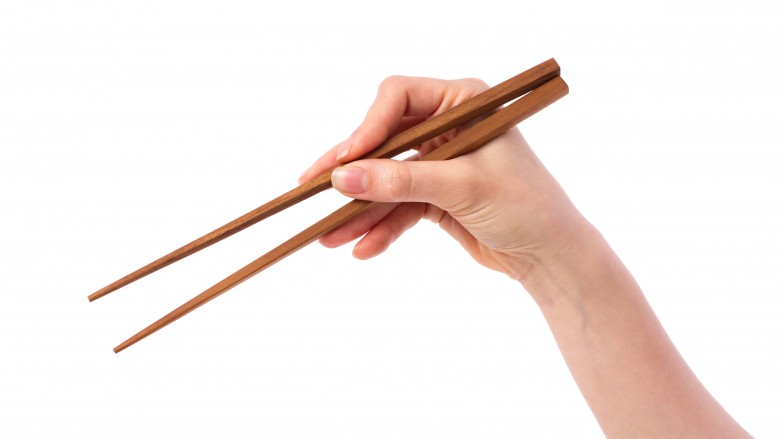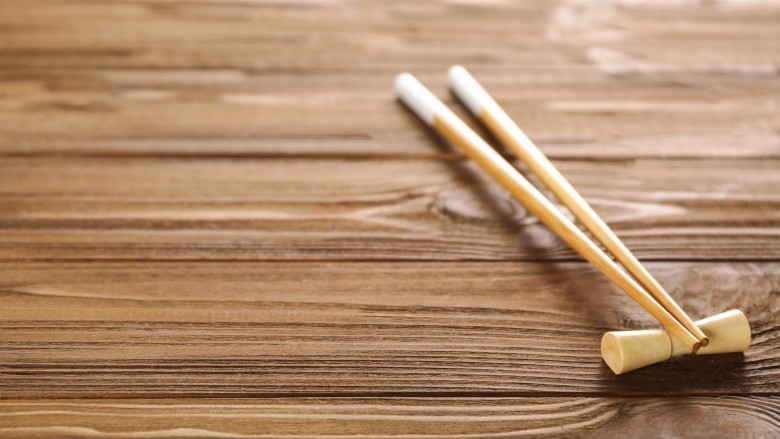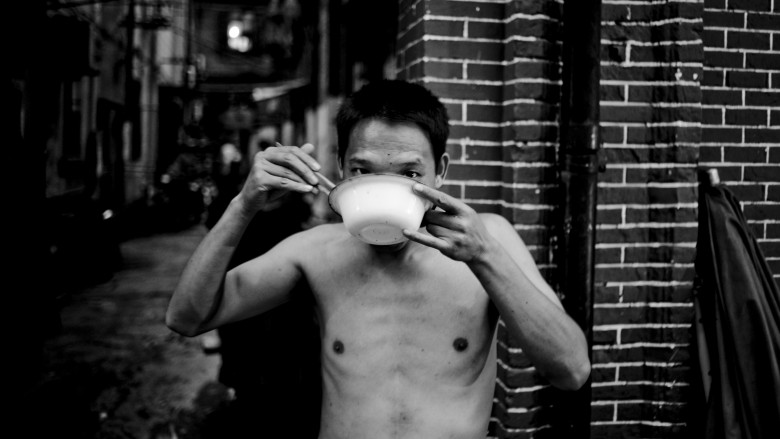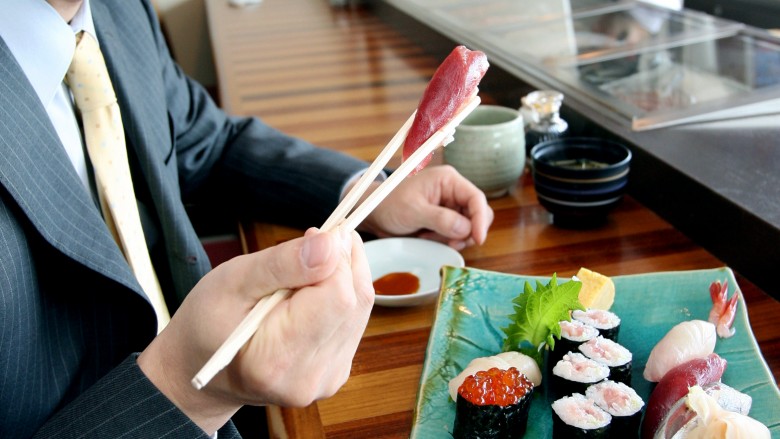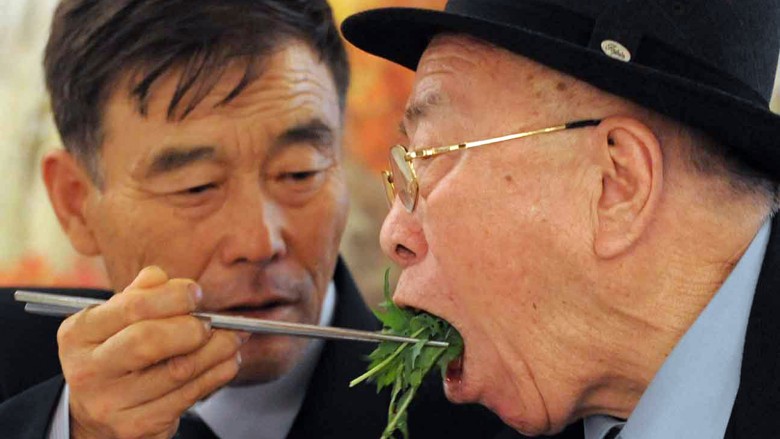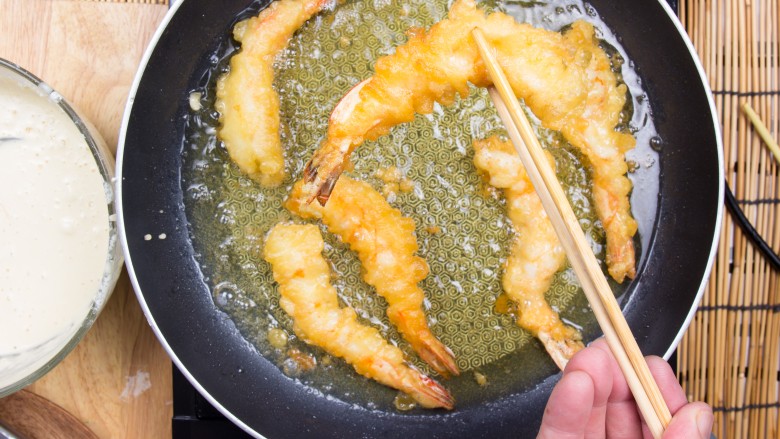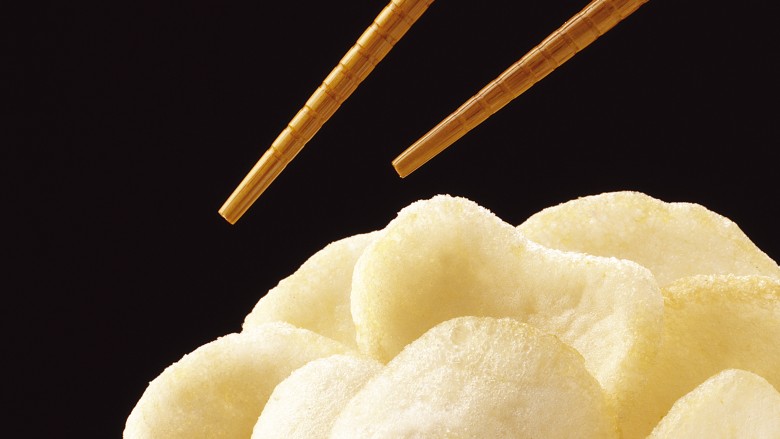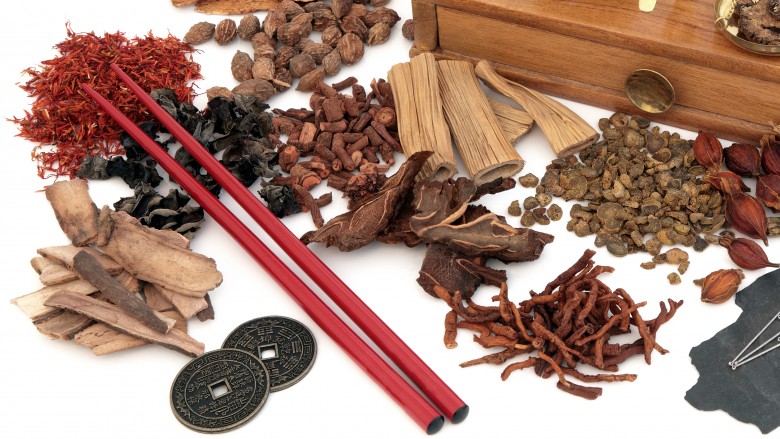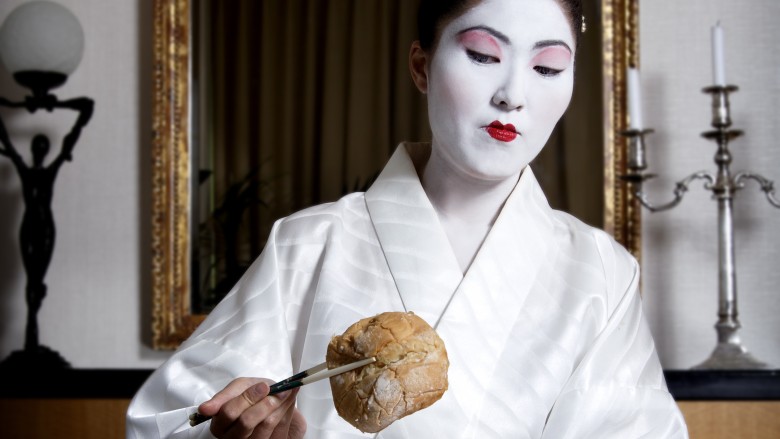Here's The Right Way To Use Chopsticks
intro
They may be intimidating to some, but chopsticks are wonderful utensils. Sure, they're not always appropriate. It's hard to eat a steak and potatoes with chopsticks. But for many dishes, chopsticks are easier and faster to use than a knife and fork,believe it or not — once you get used to them. Not to mention, you'll just fill a lot cooler the next time you sit down to a proper Asian meal.
A note before we begin: some of the usage rules might seem unnecessarily strict. In truth, if you're eating at home you can do what you want with your chopsticks. In the same way, despite years of my grandmother chiding me for licking my ice cream bowl, now I'm an adult and she can't stop me. Sorry, Nana. The purpose of these rules and guidelines is simply to make things easier, avoid causing offense, and be able to eat with chopsticks without looking outright barbaric.
The right way to hold them
Some Westerners are reluctant to use chopsticks due to a perceived difficulty. This is silly. They aren't difficult, but you do need to get used to them. While you can hold your chopsticks however you like, there is a proper way of holding them which thousands of years of use suggests is the easiest and most elegant. (You'll want to follow along in the picture above.) You hold one chopstick in your dominant hand between your pointer, middle finger, and thumb, and when you move it up and down, your thumb should be stationary. You can practice with a single chopstick to get this right. The other chopstick goes between your thumb and your palm, rests on your ring finger, and stays still.
And that's it! It might look difficult, but it's just one of those things: like riding a bike, rolling your R's, or opening a beer bottle with another beer bottle: you get better with practice. To be fair, while this is considered the proper way to hold chopsticks, a large number of people who eat with chopsticks regularly just do it however it feels right to them. According to a Meijiro University study in 2012, only 30 percent of Japanese people aged from their 40s to their 50s actually held their chopsticks in the proper way. In Singapore, it is apparently common for people to rest the ends of the chopsticks between the thumb and forefinger and manipulate the top chopstick with the middle and forefinger alone. This is considered a more awkward position, but it clearly works for them.
So if you already have a satisfactory way of using chopsticks, you can get away with it even though witnesses might occasionally shake their heads at you. But if you're a complete chopstick novice, you're probably better off learning the standard position. You need to know the rules before you can break them!
Usage rules of thumb
While there are differences in chopstick etiquette across cultures, there are also some common blunders. It is generally considered rude to impale food with chopsticks, though people do it sometimes. (You might as well eat with toothpicks, but whatever.) Chopsticks should not be used to move bowls and plates around either, because you have hands for a reason. One of the most important taboos is never to stick your chopsticks upright in your rice at the table. This resembles incense sticks burned to venerate deceased loved ones, and thus is seen as a harbinger of death. This taboo is common across chopstick-using cultures, as reminding people of their impending mortality at the dinner table is gauche at best wherever you are.
It should go without saying you shouldn't play with your chopsticks. Don't use them as drumsticks. Don't bang on your bowl and demand immediate sustenance. Don't gesticulate wildly with them. Don't stick them in your mouth and pretend to be a walrus or a vampire with absurdly long fangs. None of that. Have I done all of these things? Well, yes, but you're better than that.
Chopstick rests
In Japanese etiquette it's considered improper to lay your chopsticks across your bowl at the end of the meal. You might be forgiven for wondering what on Earth you should do with them. Fear not! Japanese restaurants that expect you to eat this elegantly will provide a hashioki, a chopstick rest. Originally developed in the Heian period as an earthernware holder to keep chopsticks warm during state banquets, they've since been refined to keep chopsticks clean and show off one's refinement to guests.
Even some disposable chopstick makers have planned for this. In 2016, Twitter user Trash Panda realized the chunk of wood at the end of some disposable chopsticks could be snapped off to serve as a makeshift hashioki, which caused a surprisingly large segment of social media to collectively exclaim, "Oh, what? Of course! I'm an idiot for not realizing." If your disposable chopsticks don't have the bit at the end, you can always roll up the paper sleeve the chopsticks come in to fashion a makeshift chopstick rest. According to Rocket News, this is also an opportunity to practice your origami skills, though I suspect some purists would consider this as following the letter of the etiquette rules but not the spirit.
Chinese etiquette
While food in ancient China was eaten with both a spoon and chopsticks, eating culture changed in the Song dynasty to only using chopsticks for reasons which are not completely understood but possibly related to the increased consumption of clumpy rice and the increased popularity of communal eating. Today chopsticks are used to eat everything except soup (use your spoon), Peking duck (use your hands), and some desserts.
Today in China (as well as Vietnam), it is perfectly OK to pick your bowl up and shovel rice into your mouth, though this is frowned upon elsewhere. This makes sense when you consider Chinese chopsticks are round unlike their square Japanese and Korean counterparts. You pick up your bowl with your thumb on the mouth of the bowl and your fingers supporting the bottom. Not picking up your bowl and just leaning forward into it is considered rude as well as bad for digestion. It is a faux pas to allow the eating ends of your chopsticks to touch the table, and thus you should put them across your bowl or on a handy chopstick rest. Banging your bowl with the chopsticks is considered reminiscent of beggars asking for food and is best avoided.
Japanese etiquette
The Japanese language has a lot of chiding words for chopstick no-nos: "namidahashi" ("tearing chopsticks") for when they're covered in food scraps or used to pick food up from the table, "saguribashi" ("probing chopsticks") when using them to dig for food rather than decisively selecting a piece, "mayoibashi" ("lost chopsticks") for indecisively pointing one's chopsticks at different dishes, "utsuribashi" ("transporting chopsticks") for transporting food from one pair of chopsticks to another, and "neburibashi" ("licking chopsticks") for when someone sticks their chopsticks in their mouth for too long and makes noises. Similar expressions exist in other Asian languages, and you can tell people did these things all the time by the fact they had to invent words for them.
Japanese chopstick use differs from standard Chinese practice in some ways: while placing your chopsticks across your bowl after eating is fine in China and Taiwan, in Japan it's a faux pas. Perhaps the etiquette point the Japanese are particular sticklers about is their disdain for "jikabashi" ("direct chopsticks") using one's own chopsticks to take food from the collective plates. To do so is seen as unhygienic, and uncomfortably reminiscent of the way bones are handled during funeral rites. While traditionally it was proper to use a different pair of chopsticks to move the food from communal plate to eating plate, many modern Japanese adopt a compromise of reversing the chopsticks in their hands when taking communal food instead. This isn't really considered good manners either, but it's better than nothing.
Korean etiquette
Korean chopsticks ("cheotgarak") are unique in being flatter, squarer, and made of metal rather than wood or bamboo. They're slightly shorter than Chinese chopsticks and slightly longer than Japanese chopsticks. The tradition is said to originate from the Baekje period when royalty used silver chopsticks to deter assassination attempts, as people believed silver would change color when exposed to poison. The common people thus adopted metal chopsticks to emulate the royals, and the tradition continues to this day. Professor Q. Edward Wang believes the tradition can also be linked to the influence of Tang dynasty China as well as the relative lack of bamboo and advanced metallurgy present on the Korean peninsula. Though traditionally made with brass or bronze, modern Korean chopsticks are usually made with stainless steel.
They're a fair bit more slippery and challenging to use than their wooden or bamboo counterparts, so they come with a metal spoon in a set called sujeo. The chopsticks are used to eat side dishes or pieces of meat while the spoon is used to eat soups and rice. During the pretentious Joseon dynasty period, the nobility believed using chopsticks to eat rice was inelegant, so they were bewildered when they visited Ming China and saw people shamelessly doing just that. Nowadays, the spoon and chopsticks should not be used at the same time. Besides being rude it would look ridiculous, though would perhaps be a pretty good party trick if you're ambidextrous. An exception to this rule is when eating food likely to drip, because in Korea it is considered uncouth to pick up one's bowl.
These rules can be confidently abandoned if you've been drinking soju all night and are now sitting outside a convenience store eating instant noodles with a part of disposable chopsticks.
A versatile cooking tool
I've often wondered why no culture in the world uses the tongs as an eating utensil. You can pick things up and stuff them in your mouth, which seems to be the main criteria. But tongs are unwieldy and you're better off using chopsticks. The same rule actually applies to cooking as well. In Japan, cooking chopsticks are known as saibashi, twice as long as eating chopsticks and usually tied at the end so you can hang them up after you've finished using them.
Food writer Dakota Kim learned the value of chopsticks as a kitchen tool by watching her mother use them to deftly pluck fried chicken from oil. A slotted spoon was a relative hassle by comparison. Chopsticks are great for cooking stir-fry and pasta, blanching vegetables, flipping bacon, straining noodles, mixing sauces, tossing salads, plucking olives or pickles out of long jars, testing to see if baked potatoes or muffins are cooked, pitting cherries, skewering vegetables, toasting marshmallows, stirring coffee grounds, and even substituting for extra-long matches if you have a hard-to-reach pilot light on the stove. Chopsticks are a lighter touch affording more control, superior to savage tongs when flipping delicate things like tofu or flaky fish. David Barry from the renowned Culinary Institute of America advises using chopsticks to scramble eggs, as they're less likely to scratch up your pan while being adept at breaking eggs up into small curds. Julia Child was another believer in cooking chopsticks, using them on The French Chef to make omelettes.
They can even take the place of tweezers when delicately laying herbs, micro-greens, gold leaf, chocolate shavings, crystallized fruit, edible flowers, or precise drabs of sauce onto a plate. You'll be wondering why you bothered with the tweezers in the first place.
Chopsticks are a versatile tool which can substitute for tongs, spatulas, or spoons. Sure, you won't want to throw those out — don't try flipping a steak or pancakes with chopsticks — but if you have cooking chopsticks to hand you'll find yourself reaching for them more than any other utensil. And even if you don't have the fancy cooking chopsticks, a normal pair of eating chopsticks will substitute in a pinch, a perfect compromise for a penniless university student.
Greasy food for gamers
Using the computer as often as I do, I have a lot of experience with the trials of eating and typing. It gets messy with all the crumbs and sticky fingers. The simple solution is to use chopsticks to eat greasy snacks like chips or popcorn. Genius! But it's apparently quite common in some parts of the world. One gamer even says "not using chopsticks really is such a noob thing to do." There are some tricks to make things convenient. Keep the ends of the chopsticks in the bag, placed near your dominant hand. The best chopsticks to use are wooden waribashi chopsticks with their rough and straight edges, and puffed corn snacks and corn chips are easier to use for novices than the more slippery potato chips. Pour the snacks into a bowl if negotiating with the bag is a hassle, but you'll get the hang of it.
Still, for some people it might be odd to use chopsticks in this way. Let me put it in perspective. When I was a filthy university student and lived with other filthy university students, no one did the dishes. We didn't even argue over it; it was just an accepted fact they weren't going to be done. I wanted cereal, and all the spoons were buried beneath layers of crusty plates. What I did have were disposable chopsticks. So that's how I ate cereal. Compared to that, eating Cheetos with chopsticks is far more reasonable.
For divination?
From the 10th century, fortune tellers in China believed chopsticks were efficacious fortune telling tools. Some even prayed to the kuaizi shen, or chopsticks god. There is no record of this tradition in Japan, but in Shinto it is important to provide chopsticks for the omnipresent kami spirits that might wish to attend dinner.
Some still believe you can divine someone's future or personality with chopsticks. Holding one's chopsticks low indicates a conservative personality, while holding them high shows an active nature and an adventurous approach to eating — though if you're a young woman, it also indicates how far away you'll settle down when you get married.
In 2014, dim sum and cocktail restaurant chain Ping Pong took advantage of this history in 2014 when it developed its own fortune telling chopsticks with a thermosensitive lacquer which would change color — to green, white, red, blue, or yellow — when used, which are associated with the elements of Chinese philosophy, namely wood, metal, fire, water, and earth. No luck getting your hands on them now, though. The offer was limited to the first 300 customers to say "kung hei fat choy" ("Happy New Year") to the Ping Pong staff.
Know when not to use them
Years ago, I went out with my family to a Thai restaurant. My mother looked confused at the fork and spoon we had been given and requested chopsticks. I knew chopsticks weren't normally used in Thailand and said nothing, expecting the waitress to say they didn't have any. Instead, she went back to the kitchen and brought us our chopsticks, all different pairs, clearly scrounged from the utensils they happened to have at hand. I was suddenly mortified. Why didn't I speak up? Alone with my thoughts late at night, I sometimes have a vision of that moment, all of us with our different colored chopsticks and the insufferably patient expression on the waitress's face.
Not all Asian countries use chopsticks. In Thailand, traditional Thai food is eaten with a fork and spoon and only Chinese-influenced noodle dishes are eaten with chopsticks. In Indonesia, chopsticks are used in Chinese-Indonesian restaurants, but food is otherwise eaten with a fork and spoon or just with one's well-rinsed right hand. Similar rules apply in Malaysia, the Philippines, and other Southeast Asian nations: chopsticks are used for Chinese (or Japanese or Korean) food, but not for everything. Mongolians and Tibetans are well aware of chopsticks, but generally don't use them unless they're eating Chinese food.
Sure, you can use chopsticks to eat whatever you want. But please don't insist upon them just because you're eating Asian food. It's reductive and silly and http://www.thelist.com/84464/w...embarrassing.

